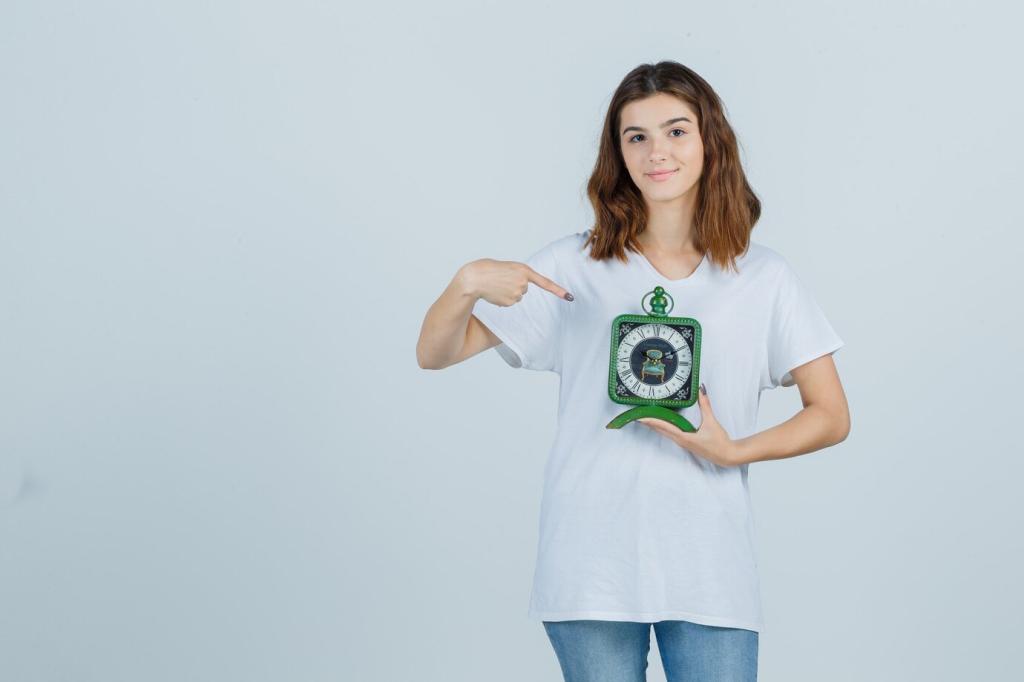
Sustainable Style Tips for Daily Fashion
Sustainable fashion is more than just a trend—it’s a responsible way to approach your daily wardrobe choices. By embracing eco-friendly practices and making thoughtful decisions, you can significantly reduce your environmental footprint without sacrificing your personal style. This page explores practical advice, insightful habits, and key concepts for anyone seeking to merge fashion sense with a commitment to sustainability in everyday life.
Building a Conscious Wardrobe
Choosing Quality Over Quantity
Opting for fewer, higher quality pieces is fundamental for sustainable style. High-quality garments are designed to last, reducing the need for constant replacement and thereby decreasing textile waste. By focusing on durability, classic designs, and timeless cuts, you encourage a mindset shift away from fast fashion’s disposable culture. This philosophy also gives you the freedom to invest in items you truly love and will wear repeatedly, making your wardrobe more meaningful and personal. Ultimately, emphasizing quality promotes responsible consumption and lessens your overall environmental impact.
Researching Ethical Brands
Understanding where and how your clothes are made is critical for a sustainable wardrobe. Ethical brands prioritize transparency in their manufacturing processes, fair wages, and safe working conditions. Doing your research before purchasing gives you the power to support companies that align with your values. Many sustainable brands also use organic materials, natural dyes, and renewable energy in production. By choosing these labels, you are not only investing in better quality products but also encouraging the fashion industry to adopt more responsible practices. Educating yourself and staying informed enables you to make purchases that resonate both ethically and aesthetically.
Embracing Wardrobe Minimalism
Wardrobe minimalism is about simplifying your choices and resisting the urge to accumulate excess. It involves organizing your closet to contain only items that serve a genuine purpose and bring you joy. With a pared-down selection, it’s easier to create outfits that reflect your style, while reducing decision fatigue and waste. Minimalism also encourages mindfulness in future purchases, ensuring that anything new truly fits your needs. This intentional approach to fashion leads to a more sustainable routine, as you naturally prioritize longevity and utility over trends and fleeting desires.
Caring for Your Clothes Sustainably
The way you launder your clothes plays a significant role in their durability and ecological footprint. Washing items in cold water reduces energy consumption and minimizes fiber breakdown, thereby prolonging the life of fabrics. Choosing natural or eco-friendly detergents avoids releasing harmful chemicals into waterways. Air drying rather than using an electric dryer whenever possible further lowers energy use and protects delicate textiles from damage. Frequency also matters: washing only when truly necessary helps preserve both your garments and the environment. With these mindful routines, you maximize the longevity of your wardrobe while caring for the planet.
Repairing clothing rather than discarding it is a crucial sustainable habit. Simple fixes like sewing on a button or patching a seam can extend an item’s lifespan and add unique character. For more creatively inclined individuals, upcycling transforms old or worn pieces into something new and fashionable. Turning a pair of jeans into shorts or adding embellishments gives renewed life to neglected garments. Not only does this prevent waste, but it also encourages a deeper connection to your possessions. By embracing repair and upcycling, you minimize your contribution to landfill while cultivating a distinctive and sustainable sense of personal style.
Storing your clothes properly ensures they remain in great condition longer. Use hangers that support garment shapes and store sweaters flat to prevent stretching. Keeping clothing in a cool, dry space prevents issues like mold, mildew, and fading from sunlight. Rotating your wardrobe seasonally and ensuring that everything is clean before storage also help maintain fabric integrity. Protecting your clothes in this way reduces the need for replacements and demonstrates respect for both the pieces you own and the resources invested in making them. Sustainable storage is a simple but impactful component of responsible fashion.
Prioritizing Eco-Friendly Materials

Organic cotton, linen, and hemp are just a few natural fibers that have a lower environmental impact than their conventional counterparts. These materials are often grown without synthetic pesticides or fertilizers, making them healthier for both the soil and the people involved in their production. Organic fibers are also typically biodegradable, meaning they won’t linger in landfills for centuries. Wearing clothing made from these fabrics ensures comfort and breathability, while also reducing the overall chemical footprint of your closet. Integrating more natural fibers into your wardrobe is a straightforward yet effective step toward sustainable dressing.
